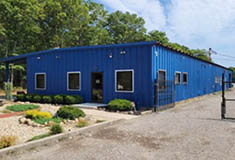Here today, gone tomorrow. What’s your plan to combat obsolescence? - by Anthony Quaranta

The Q Group
Almost 20 years ago, “Who Moved My Cheese?” was published. It was a book about dealing with change, particularly how the evolution of technology was beginning to impact the American economy, and perhaps more so, small businesses. In a recent conversation I had with a group of businesspeople, the premise of “Who Moved My Cheese?” resonated once again.
One colleague sells insurance, and he mentioned a customer who had purchased an “autonomous car,” also known as a self-driving car. These vehicles can sense the environment and navigate without human intervention, using such technology as radar, GPS, and computer vision. While some see a future where autonomous cars reduce collisions, thereby lowering the need for insurance, pundits debate the liability issue, i.e., who’s responsible if there is a crash?
And that’s a fair question, particularly since a recent Forbes article predicted there would be 10 million self-driving cars on the road by 2020. The impact? According to Forbes, possible industries that will either decline or benefit from autonomous cars include:
• Car manufacturers: Car sharing (i.e., Uber) has already made some impact, but self-driving cars may lead some people to decide that car ownership is unnecessary.
• Insurance companies: Forget the debate about who’s liable. With a predicted reduction in the number of accidents upward of 90%, insurers will definitely suffer revenue losses.
• Auto repair shops: With 90% fewer accidents, less cars need to be repaired. However, that also encourages a new industry that’s skilled repairing automated cars and the technology that powers them.
• Logistics: Automated shopping and home delivery service will become the norm. Your two-car garage may also disappear, replaced by an automated delivery bay.
This is all interesting food for thought indeed. In “Who Moved My Cheese?,” the authors cited such “back-in-the-day” examples of obsolescence as manufacturers of fax machines, large mainframe computers, and VCRs. As consumers, we experienced each rise and fall, and when these products finally did disappear, it seemed like it happened overnight.
So, the question becomes how do you project out or think about how your industry might be changed in the near future? And, moreover, how might it be affected by a technological evolution (or solution) that would revolutionize the way your customers view your product or service? One of the lessons of “Who Moved My Cheese?” is to always make sure you have a plan. Although it may be hard to predict a precise future, what we do know is that inevitably things will change. So, the question becomes how can you best plan for that change?
Consider these tactics:
• Planned obsolescence: We have all witnessed significant change in our lifetime, most fueled by technology whose adoption curve keeps getting shorter and shorter. That’s a key reason why the computer industry is so adept at profiting from obsolescence. Software apps are always being created, with programming that’s “upwardly compatible.” That is, new versions can read the files of the older versions, but not the other way around. So, newer operating systems and/or the purchase of new computers always remains relevant.
• Complementary offerings: Customers who buy from you will likely buy from you again. Take a thoughtful look at your product and see if you can design something that complements it. This is a fairly straightforward effort within retail, i.e., think of your favorite donut shop that also sells coffee. But probably all businesses can provide complementary products or services as well. Copier manufacturers also offer maintenance and support. Apple sells iPhones and iTunes. And your local computer repair guy also provides home or small office computer installation and set-up.
• Research: Be attuned to what’s happening in your marketplace so you can be on top of trends and what looks to be “the next best thing.” Talking to customers and clients is always insightful. As is using research from trade associations, magazines, and websites. Think about how trends may impact your business in the near-, medium- and long-term. And what are the strategies you can implement now that either capitalize on these trends, or help mitigate their risks?
In 1987, Bill Gates projected what would be available in 20 years, saying, “…the dream of having a world database at your fingertips will have become a reality…also, we will have serious voice recognition.” Do Wikipedia and Siri ring a bell? So, make it your business to not only acknowledge change, but become it. Don’t let the future obliterate your product or service. If you know your customers and your market, you should be able to serve them both for many, many years to come.
That’s Q from the street.
Anthony Quaranta is the president of The Q Group, Hauppauge, N.Y.
Suffolk County IDA supports expansion of A&Z Pharmaceuticals


The evolving relationship of environmental consultants and the lending community - by Chuck Merritt
When Environmental Site Assessments (ESA) were first part of commercial real estate risk management, it was the lenders driving this requirement. When a borrower wanted a loan on a property, banks would utilize a list of “Approved Consultants” to order the report on both refinances and purchases.









.jpg)